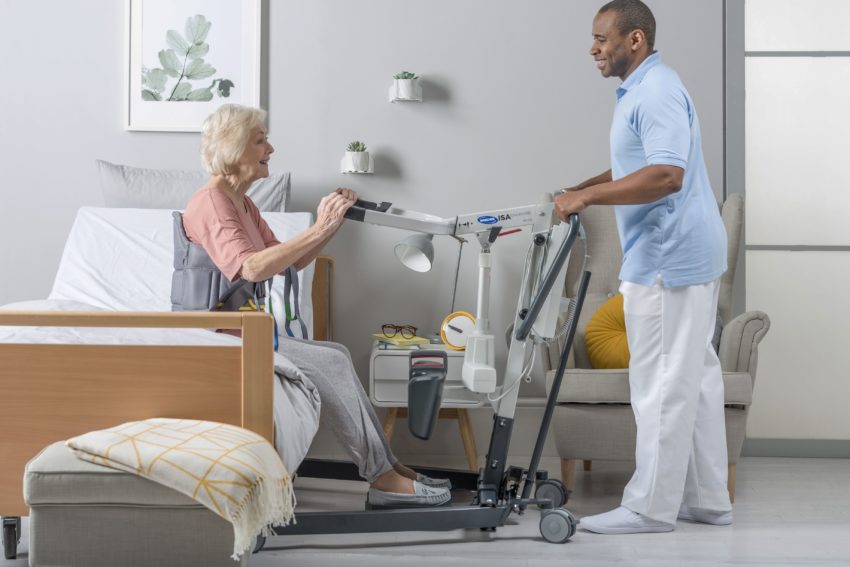The use of a stand aid is a way of helping a person maintain an active stand and transfer whilst supporting activities of daily living. Stand aids can also be a very effective rehabilitation tool.
As health professionals, we know that the process or ability to stand can be affected by illness, disability or even the environment quite significantly. For example, a lengthy hospital stay can make standing very difficult and increase the need for carers to assist with ADLS. Here, a good stand aid can help ensure the individual returns to their normal level of functioning.
Non-mechanised stand aids
These are essentially framing which a person can pull up on. Some varieties have seating pads for greater safety and user confidence, some are simply frames that facilitate a transfer. They can help a person pull themselves forward in a seat and use their arms to pull up reducing the strain when initiating a stand.
Once standing, a carer can then turn the device 90 degrees so that the person can sit on an alternate surface such as an armchair or commode.
Mechanised stand aids
Historically, only hospital mechanised stand aids promoted the normal pattern of standing, leaving therapists discharging patients from hospital or providing community rehabilitation with a quandary, as mechanised stand aids available in community stores did not promote normal movement.
Now however, manufacturers such as Invacare are building mechanised stand aids that promote normal pattern of movement but are also small enough to be used in a person’s home, within the budget of residential care homes and community equipment loan stores.
When to use a mechanised stand aid?
If your client cannot pull themselves forward into standing, then a mechanised stand aid may be the option.
For this to work the client must be assessed as having the ability to activate muscles to some extent to facilitate a stand. Effectively the client needs to be active within the stand for this to have any benefit.
Many mechanised stand aids do not promote normal patterns of movement. Relying instead on the user having good core strength. This lift can be very uncomfortable, particularly on the lower leg as that is taking pressure during the movement.
Until recently nothing compact, domestic friendly, and promoting a normal sit to stand movement existed. In some instances, patient rehabilitation goals are being set back due to a lack of appropriate equipment.
However, there is light at the end of the tunnel.
Modern mechanised stand aids such as Invacare’s ISA are set up in such a way that the arm movement and leg positioning support the sit to stand pattern from the first point of moving forward to engaging muscles, all the way to an actual stand. This can lead to supporting safe transfers using normal patterns of movement but also as a rehabilitation tool in the community.
The Invacare ISA Stand Assist supports the user to complete an ergonomically normal stand, moving the centre of gravity forward so that the musculoskeletal system engages appropriately. This type of mechanically supported stand could have a huge impact on discharge planning, community-based rehabilitation and long-term health and well-being.
About the author:
John Callas is a HCPC registered Occupational Therapist with over 18 years working in various clinical fields. John has spent time in acute and rehabilitative settings acquiring the foundations to support knowledge on impairment and disability. He is a former Community OT Team Lead, Moving and Handling Advisor and National Back Exchange member.
